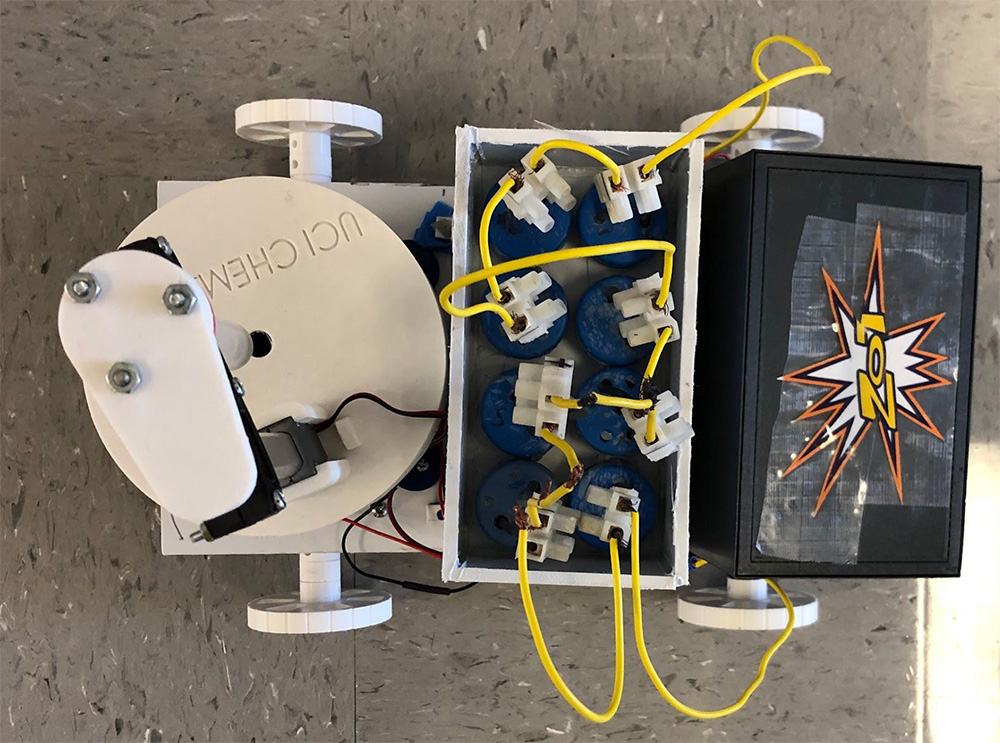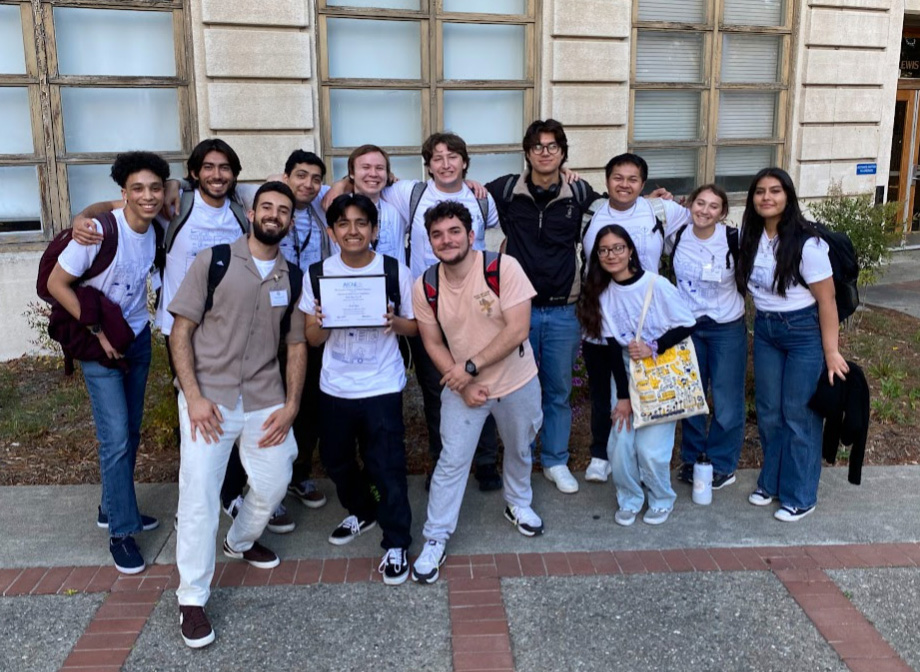UCI’s Chem-E-Car Wins 2024 Western Regional Competition

May 2, 2024 – UC Irvine’s Chem-E-Car team placed first at the 2024 Western Regional Competition last weekend, beating all other university teams across California and Arizona.
The students competed with cars from Stanford, CalTech and other UCs with student-designed cars powered by a chemical energy source. The contest required the cars to run a specific distance that was announced only an hour before the contest. The top three winners, which also include UC Davis and UCLA, will compete in the international competition in October in San Diego.
The champion UCI car is named Acid Ron and is powered by a lead acid battery the students created. The contest asked the cars to stop at the 22.86 meter mark. Acid Ron stopped the closest at 21.95 meters.
“The car was able to stop so precisely by employing reaction between sodium thiosulfate and hydrochloric acid,” said Chem-E-Car Lab Lead Lorena Martinez. “We calculated the necessary concentrations of sodium thiosulfate and hydrochloric acid to run for the required length and stop at the desired distance.”
The annual American Institute of Chemical Engineers’ Chem-E-Car competition for students has the potential to contribute new ideas for sustainable technologies and gain sponsorship from companies to help fund the teams.
“I enjoy how Chem-E-Car challenges me to solve problems and think critically,” said Martinez, a chemical engineering junior on the car's Stopping Team. “It’s allowed me to grow and learn more than I could imagine outside a classroom.”
Co-Project Manager Zaid Alsharif said four teams of engineering students spent a year of endless hours in the lab to build Acid Ron. They did hundreds of tests throughout the year and were working until 2 a.m. the two nights before the competition.

Everything about the car is built from scratch by students, including the chemical reaction and power source. Alsharif said what was different this year was the battery itself. They had a fully assembled lead acid battery that only required to be charged at the contest. The team needed to employ the exact concentration of sodium thiosulfate and hydrochloric acid to have it stop at the right time.
Chem-E-Car enables students to apply their knowledge to real world applications. “In projects like Chem-E-Car,” said Alsharif, “that’s where you’ll have the chance to shine and have your way at it.”
Alsharif, a chemical engineering junior, aspires to be a process engineer for fuel cells and batteries. “Throughout this project, I really honed my leadership and teamwork skills, deeply understanding the value of communication and mutual support,” he said. “Obviously these skills are really vital as I look forward to a career in engineering where collaboration and innovation are key.”
“I personally have been working on this car since summer,” Martinez said. “The happiness from feeling the excitement of my team as we received first place is an experience I will never forget.”
- Natalie Tso
